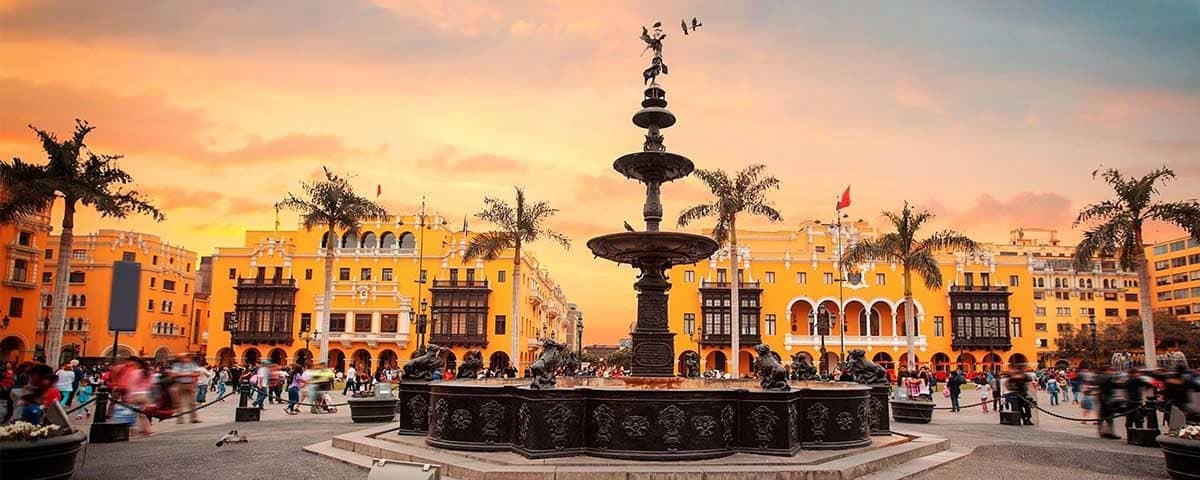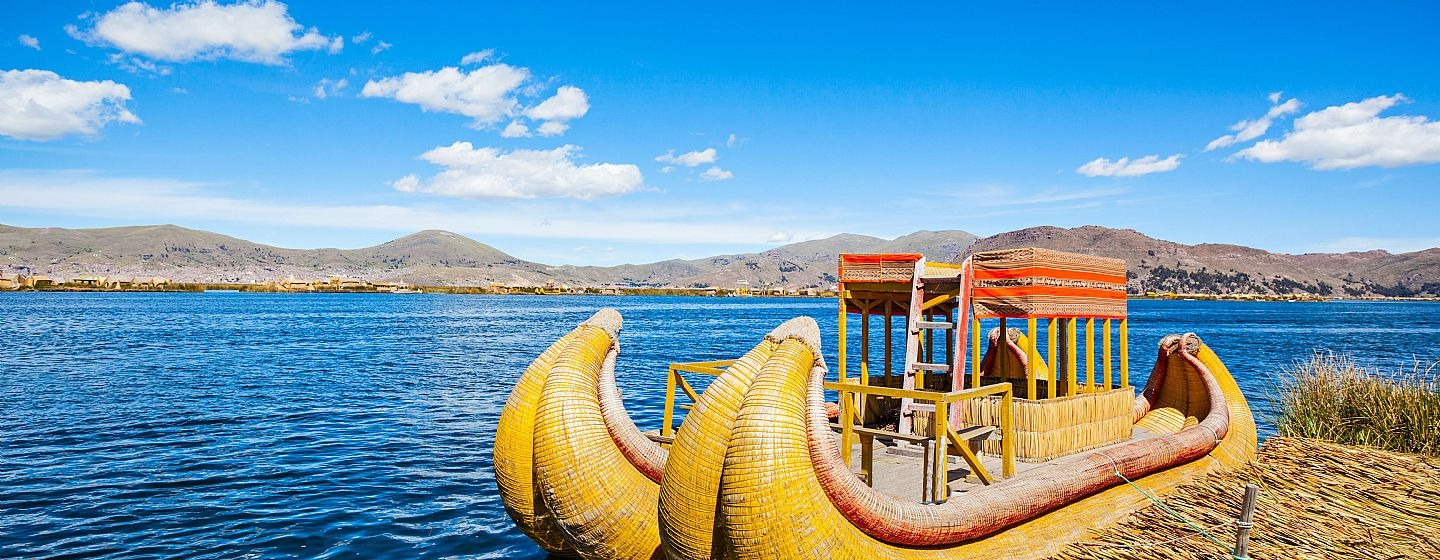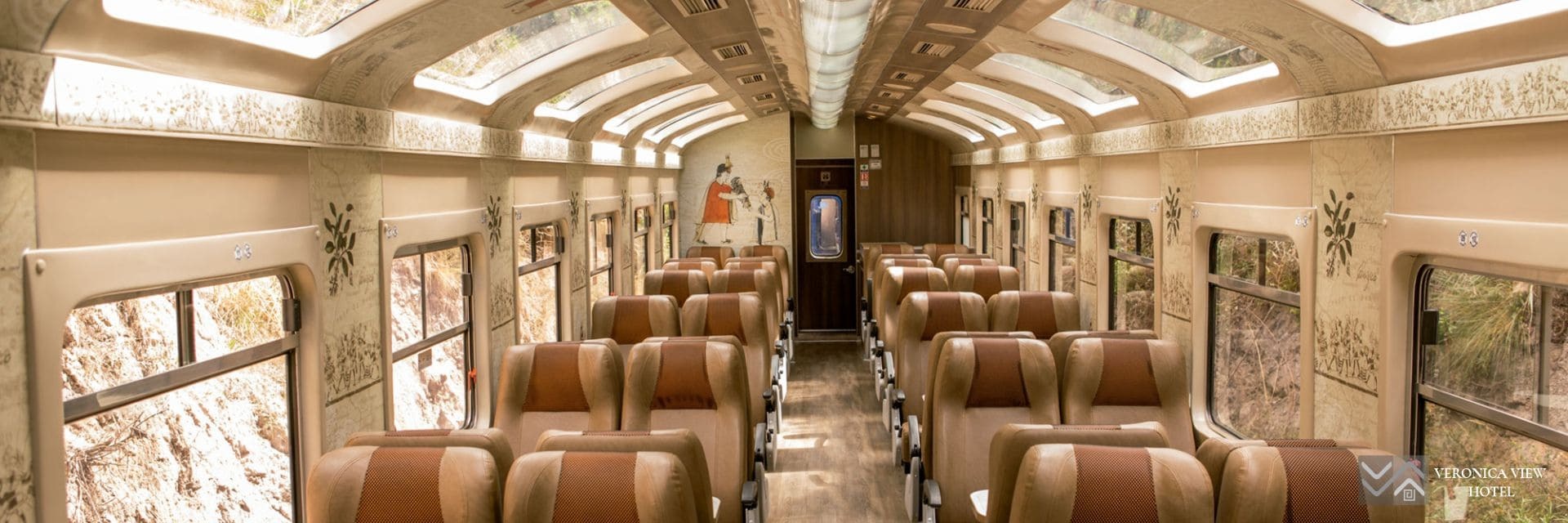
The Inca Empire once ruled the mystical land of Peru and every year thousands of visitors book their flights to Peru to experience the magic for themselves. Machu Picchu and the Sacred Valley are among the most visited sites, but beyond these famous sights is a country blessed with the most spectacular scenery in the region; a breathtaking 2,000 miles of coastline and thousands of miles of lush Amazon rainforest merging into the Atlantic.
The massive Andes mountain range divides the country down the middle, with dense jungle one side covering 60 percent of Peru's landmass, and sandly desert edging the coast on the other side. Unique animal and plant life flourish across all regions, which are also dotted with magnificent examples of ancient civilizations including the Nazca Lines, Chan Chan, Chavín de Huántar, and Machu Picchu. The colonial monasteries and churches evoke the Spanish conquest in myriad towns and isolated villages.
What to expect upon arrival of your flight to Peru? Some of the most beautiful landscapes in South America, a hike through the Andes and interesting conversations with locals who still speak the Peruvian Quechua language. Peru is the fourth most populous country in South America and its culture remains strongly rooted in Amerindian and Spanish traditions.
Peru flights land in the capital Lima. Founded in 1535 by Francisco Pizarro, the Spanish conqueror, it is called La Ciudad de Los Reyes (the City of Kings). It was the capital and most important city of the Spanish Viceroyalty of Peru and some of its fascinating buildings date from this period. The vibrant city provides a good introduction to the country and a base from which to explore other cities, but a few days in Lima is usually more than enough. On the way to Machu Picchu is the colonial city of Cusco, which is worth a stop. Descendants of the Incas still live here, and examples of colonial art are scattered along the stone streets.

The town of Aguas Calientes, west of Cusco, is where tourists take buses up to the legendary Machu Picchu. Peru's most popular tourist destination, Machu Picchu still embraces the Inca legacy and is one of South America's great mysteries. Archaeologists have found more than 50 burial sites and 100 skeletal remains at Machu Picchu. As debate rages on as to whether Machu Picchu was a forgotten city in a time of conquest or a royal retreat prior to the Spanish invasion, tourists still book flights to Peru for a glimpse of its archaeological masonry and clues to its mysterious past . After exploring the ruins, those looking for even more adventure can return to Cusco and take the train to Puno and explore the sacred Lake Titicaca, the highest navigable body of water in the world.
Peruvian cuisine is one of the greatest cuisines in the world. It is a mix of Pre-Inca, Inca, Spanish, African, Chinese, Japanese, Italian, French and British. Cebiche (marinated raw fish) is the national dish, but cuy (guinea pig) is also on the menu in the Andes, all along with inca kola, the lemon verbena soft drink that tops all others in Peru.
Tourists booking flights and tours in Peru will get more than they bargained for - and that's a very good thing when it comes to this South American country. It's one of those must-visit countries and it's packed with amazing geography. What is the deepest gorge? Colca Canyon. What is the oldest city in America? Caral Where will you see the longest waves? In Chicama. And the biggest river? Peru is the source of the Amazon. What is the highest navigable lake in the world? Titicaca. There is so much to see and do in Peru that trying to figure out where to start can seem overwhelming. Here are some tips that can help you plan and make the trip as smooth as possible.

The main airport in Peru is Jorge Chavez International Airport (LIM) in Lima. It's only about 7 miles from the city center so finding your way isn't too much of a problem; however, your options are somewhat limited. The easiest way to find a taxi booking is in the arrivals area. Make sure you agree on the fare before you start the journey and make sure you have agreed on the currency in PEN as some taxi drivers like to scam passengers and confuse them into thinking the amount be in dollars instead. Otherwise you can go by bus, but they do not enter the airport premises, you can find them about 15 minutes walk from the airport. The bus fare is incredibly cheap, but if you're not interested in taking public transport, a taxi is your best bet.
Once you're settled into your hotel and ready to explore the country, there are a few different options you can use to get around. Here are some tips:
Flight: Several airlines fly domestically, including Latam, the country's oldest airline, which connects eleven cities such as Lima, Arequipa and Iquitos. Sky Airlines connects nine cities including Lima, Trujillo and Chiclayo. Viva Airlines flies between Lima and Huanuco, Huaraz, Jauja, Andahuaylas, Atalaya, Ayacucho and Cajamarca.
Rail: Peru Rail and Inca Rail offers trips to Machu Picchu, Cusco, Sacred Valley, Puno, Lake Titicaca, Arequipa and Colca Canyon. There are luxury trains like the Hiram Bingham that runs between Cusco and Machu Picchu while the Vistadome runs between Cusco to Machu Picchu and Sacred Valley to Machu Picchu. Expedition train are designed for no-frills travelers and are available on the following routes: Cusco-Machu Picchu, Sacred Valley-Machu Picchu, and Cusco-Lake Titicaca.
Bus: There are several private bus companies that offer cheap bus services throughout Peru, including Ormeno and Cruz del Sur.
Car Rental: Renting a car is easy. Budget and Avis are just two of the most well-known companies operating in Peru.

Lima is where most travelers start their Peru vacation, and it has much more to offer than just an airport. The city's Miraflores district sits right on the Pacific Ocean and offers shopping during the day with fun bars and clubs at night. Being so close to the sea, Lima has excellent seafood, especially its ceviche. As the town is on a cliff, you can also go paragliding.
Machu Picchu has long been Peru's most popular tourist attraction, and with good reason, as it's a spectacular monument to the Inca civilization. Most travelers take one of the trains from Pueblo Machu Picchu to the site, just make sure you book in advance as they can and sell out. Consider staying a night at Pueblo Machu Picchu before acclimating to higher altitudes.
If you don't mind taking a short flight during your stay in Peru, you can visit the Amazon Rainforest. You can enter from Iquitos or Puerto Maldonado, and while you can get there by car, the roads aren't the best and flying is the safest option. Expect fascinating wildlife, and there's even a jungle lodge to stay in.
A few hours south of Lima is the village of Huacachina, a small oasis in the middle of a large desert. Not only is it a great place to relax, but you can also go sandboarding and a fast dune buggy ride.
Visit the third-highest waterfall in the world, Gocta Falls, which has a breathtaking height. Located in the upper Amazon basin, the waterfall was only "discovered" in recent years. Legend has it that the locals kept the falls secret because they feared the wrath of the beautiful mermaid who lived there.
Most travelers to Peru book their trip with two attractions: The Inca Trail and Machu Picchu. But the lesser-known gem is Choquequirao, one of South America's best-preserved Inca cities, near Cusco. After the Spanish conquest, the Incas fled to Choquequirao. Only a third of the site has been excavated so far.
The Convent and Church of San Francisco (Iglesia de San Francisco) in Lima is an interesting place to visit. Famous for its catacombs, which house the bones of tens of thousands of corpses, the well-preserved building was built by the Spanish and dates from the late 16th century.
Drive to Puno, the city on the edge of Lake Titicaca. According to Inca legend, Manco Capac, the first Inca, rose from the lake to found the Inca Empire. The "popular capital of Peru", Puno is known for its rich artistic and cultural traditions. There are more than 300 ethnic dances. The most famous dance is the Diablada, performed during the festival of the Virgin of Candelaria in February. During this time the women dance in supplication and thanksgiving to the Virgin Mary. According to a 17th-century legend, the Virgin Mary appeared to workers at a local silver mine and later saved the town from enemies.
The Nazca Lines are considered one of the greatest mysteries in the world. The geoglyphs depicting people, animals and simple lines. To see them, a sightseeing flight is recommended. The Nazca Lines were inscribed on the UNESCO World Heritage List in 1994.
